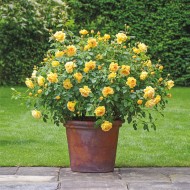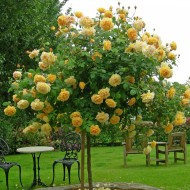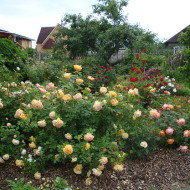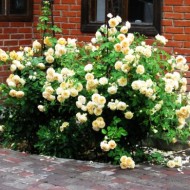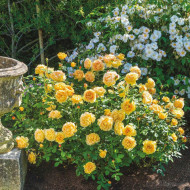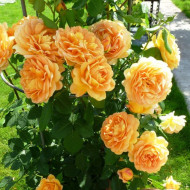Secrets of Successfully Growing the Large-flowered Rose Golden Celebration
Content
- 1 The history of the creation of the variety
- 2 Description and photo of Golden Celebration rose
- 3 Advantages and disadvantages of the variety
- 4 Video "Meet the Rose Golden Celebration"
- 5 Features of agricultural technology of a park rose
- 6 Protection against diseases and pests
- 7 Variants of using the Golden Celebration rose in the landscape
- 8 Gardeners reviews
The history of the creation of the variety
Botanists classify the plant as a member of the Austin family of English roses. The group is unofficial, but world famous. The breeders managed to combine the features of old European roses and modern tea hybrids in each member of the family. In appearance, the variety is a bush rose - a scrub. The famous British firm David Austin Roses became the creator of the variation.
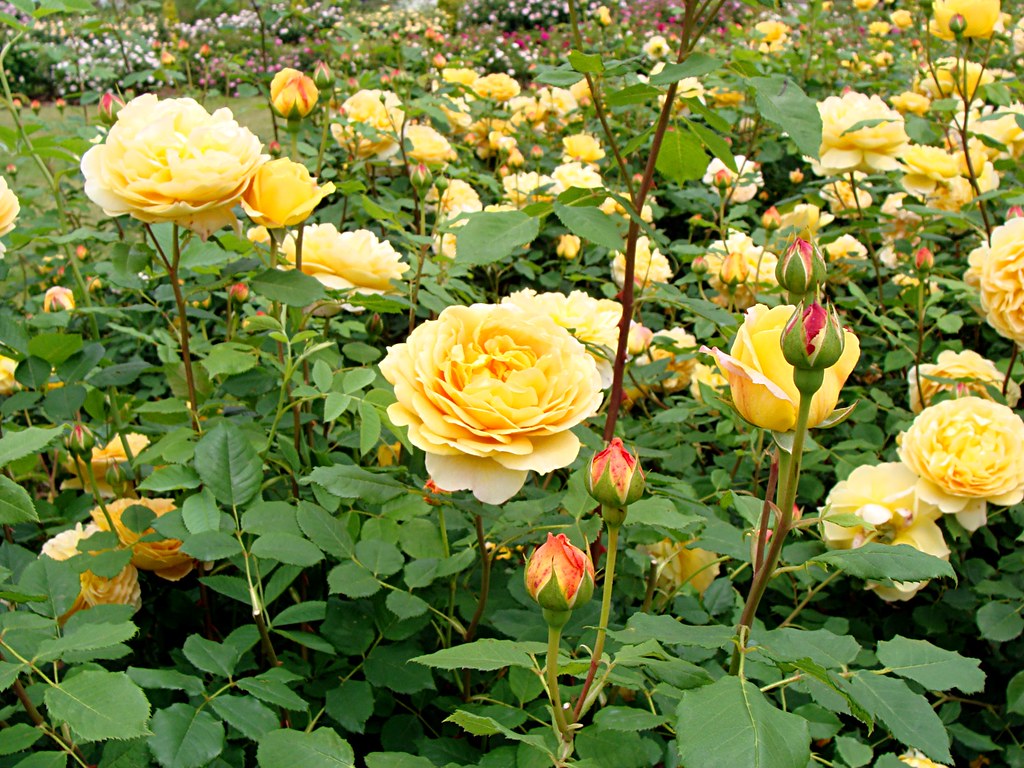
The hybrid was born in 1992 and was originally called AUSgold. The progenitors were the famous pink varieties Charles Austin and Abraham Darby. The modern name Golden Celebration was given in honor of the anniversary of the Queen of Great Britain. Over the years, the newcomer was given trade patents in various states, then worldwide recognition came, as evidenced by numerous prizes and diplomas of prestigious exhibitions. Among the awards of the Golden Celebration rose there is a diploma for the best bush shape.
Description and photo of Golden Celebration rose
The culture is considered one of the best amber roses. Here's a detailed description:
- Flowering perennial branched shrub. Tall, stretches 1.2–1.5 m, occupies the same width.
- Shoots are strong, somewhat drooping. They stretch strongly in warm climates, which allows the plant to be used as a climbing rose, decorating fences and arches with it. There are few thorns.
- The foliage is tough, dense, the color is bright green, with a glossy reflection.
- The buds are massive, up to 14 cm in diameter. The color is bright orange, reminiscent of the color of egg yolk. A coating of tiny pink specks (visible on close inspection) gives the petals pinkish and peach tones. Pure yellow colors are extremely rare.
- On the bush, the flowers are collected in miniature brushes, slightly drooping under their own weight.
- Repaired appearance, flowering occurs in waves. The first one starts in early summer and is the most lush.
- The flowers emit a strong to medium, but persistent sweet-fruity aroma, in which honey, lemon and tea notes are captured.
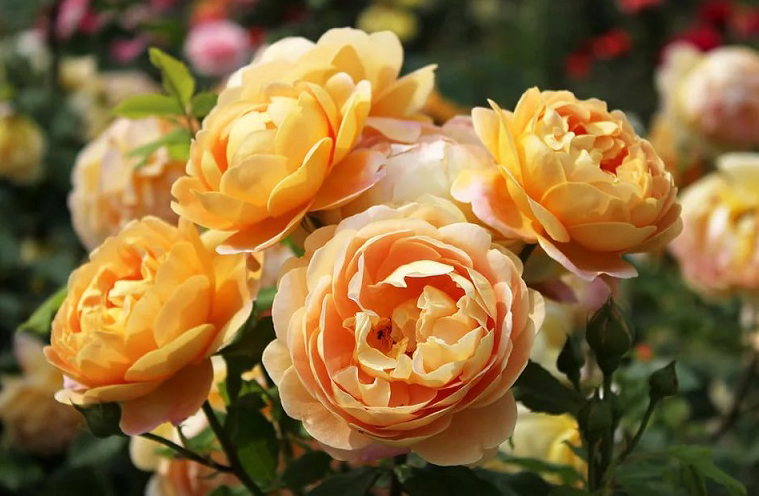
Advantages and disadvantages of the variety
- high immunity to fungal diseases;
- long, undulating and abundant flowering;
- tallness.
- the culture does not tolerate prolonged rains;
- the plant requires a reliable winter shelter.
Video "Meet the Rose Golden Celebration"
This video shows what an ornamental flowering shrub looks like and where it grows.
Features of agricultural technology of a park rose
The variety does not like shadows, but its petals easily fade in the sun.It is advisable to choose a place where sunlight falls only in the first half of the day or in the evening, and the rest of the time the bushes are in the shade of trees, fences or buildings.
Under different illumination, the buds of the variety are able to change color - in partial shade, the color of the petals becomes rich copper, under the bright sun the petals acquire a pale yellow color.
The site must be protected from strong winds, the draft is also harmful. It is also recommended to plant bushes, avoiding overly dense plantings.
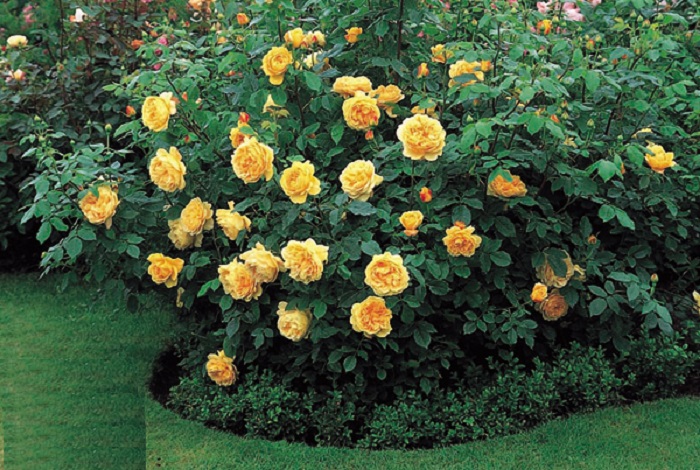
Landing rules
Prepare the selected place in advance. To do this, in the fall, the soil is dug up, necessarily bringing in manure or other organic fertilizing - compost, humus. In the spring, they dig up again, fertilizing with complex mineral compositions. If the acidity level is high, stir in 1 cup of wood ash before planting.
You can plant roses in open ground in spring and autumn. It is recommended for beginners to plant in spring to give the seedlings to take root and grow stronger over the summer. If you do not guess the landing time in the fall, the culture will not have time to acclimatize and will die in winter.
For spring planting, the second decade of May is chosen. Perform according to the scheme:
- dig planting holes 40 cm deep so that the roots grow faster, going deeper into the soil;
- when burying a seedling, make sure that the root collar is buried no more than 3 cm, otherwise the bush will degenerate into a rosehip and flowering will not occur;
- the soil at the planting site is carefully compacted - it is impossible for the seedling to stagger, as this harms rooting.

Subtleties of care
Rose bushes have to be carefully monitored, the abundance of flowering depends on this. If the rules of agricultural technology are not followed, buds on the shoots may not appear at all.
Consider the basic requirements for care:
- Water in accordance with the regime. On cloudy days, the bushes are irrigated twice a week, in the heat - more often so that the bush does not dry out, in rainy weather - less often or stop altogether. Young bushes take 7–8 liters of water, adults need twice as much.
- Loosening the earth, removing weeds. Procedures are carried out after each watering or heavy rainfall. Having completed, the trunk circle is mulched with humus, sawdust or cut grass.
- Regular feeding. Perform several times per season. In the spring, nitrogen-containing mineral fertilizers are needed, which contribute to the active growth of green mass. By the beginning of budding, fertilizers with phosphorus and potassium will be needed (nitrogenous ones are excluded). During the growing season, the process is repeated. When the bushes bloom, in late autumn the soil is fed with superphosphates and potassium salt.
- Sanitary pruning of shoots. Performed in the spring and at the end of flowering (if necessary). Cut off dry branches, damaged, frozen. Along the way, they get rid of the fading buds and thin out the crown of the bush somewhat.
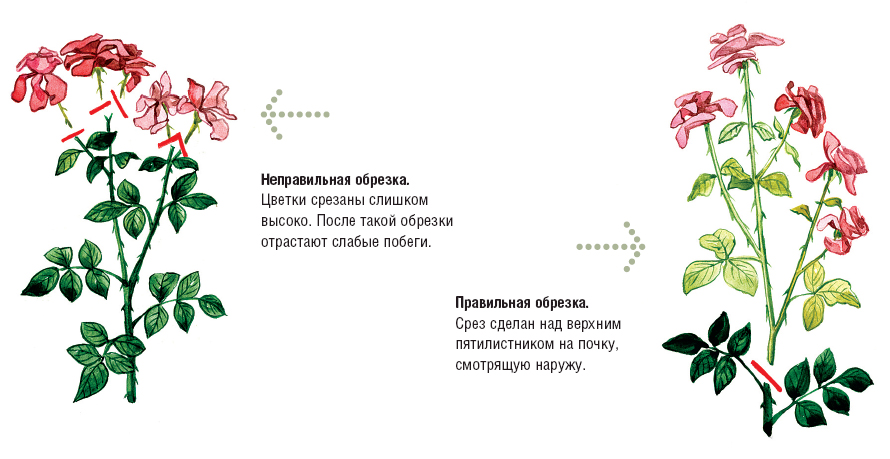
According to USDA information, the described crop is suitable for planting in zones 5 to 10. But there is a risk that already at –18 ° C the shrubbery begins to freeze.
Before the shelter, the shoots are cut off, the root area is spud with additional soil, compost or humus. It is undesirable to use peat and sawdust - they absorb moisture and, with temperature fluctuations, provoke diseases.
It is recommended to build a frame over the bushes and cover it with polyethylene, leaving areas for ventilation on the sides. But already from March-April, the roses begin to air.
Protection against diseases and pests
Breeders have provided their offspring with good immunity to common ailments, to the same powdery mildew, but things are worse with black spot. To reduce the risk, the bush should be planted in a well-ventilated place (but without drafts), at a distance of at least 1–1.5 m from neighboring plants.
To prevent diseases in spring and autumn, the bushes are sprayed with fungicidal compounds. At the first signs of insect infestation - insectofungicides.
Variants of using the Golden Celebration rose in the landscape
The park rose Golden Celebration attracts attention due to its resemblance to the sun. It is better to plant it as a tapeworm, since the plant outshines its neighbors. Pink plantings look great at the center gate and entrance, city center flower beds and small open garden lawns.
Park culture is often used to decorate high arches, building walls, and fences. You can also purchase a container version, but then timely pruning will be required.
- Growing in a flower pot
- Growing on a trunk
- Rose garden
- Monoclumba
- Flower bed
- Decorating garden paths
Gardeners reviews
“When I was planting, I pushed the root collar too far into the ground. As a result, I received a pure rosehip, prickly and flexible, but did not see the buds at all. I had to start all over again. Then I read in the reviews that many beginners make such a mistake. "
“The bushes are very lush and bright, one problem is that they bend strongly to the ground if the buds are large. Moreover, the bush stretches more in height than in breadth, so you constantly have to cut off the shoots. "
Despite its weak frost resistance, the pink variety Golden Celebration can be grown not only in the south of Russia, but also in the Moscow region and other regions with similar climatic conditions. As a result, flowers become a real garden treasure, turning every visit to the cottage into a holiday painted with golden colors.

